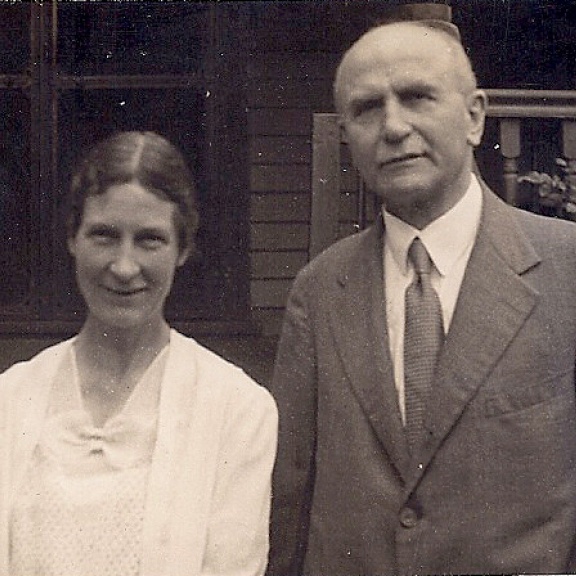History
Over the years, our grantmaking approach has evolved in response to regional opportunities and challenges and the needs of the people who live and work in the Philadelphia area. What inspired our founders 80 years ago still inspires us today: let’s help improve the conditions, experiences, and opportunities available to the people of Philadelphia and the region.
The William Penn Foundation was founded in 1945 by Otto and Phoebe Haas.
Otto Haas was the quintessential entrepreneur. After the death of his father, a civil servant in Stuttgart, Germany, he was forced to go to work at the age of 15. Little more than a decade later, in 1907 Otto partnered with the chemist Otto Rohm in Esslingen, Germany, to create the Rohm and Haas Company, a maker of tanning materials. Haas expanded the fledgling company to Philadelphia in 1909 and worked tirelessly over the next half century to create a successful American corporation, which he ran with a firm hand up until two days before his death in 1960.
Otto had a dynamic and influential partner in Phoebe Haas. She was among the first women to earn a Ph.D. in astronomy and met her husband in 1913 while traveling to South America to study the southern sky. Otto and Phoebe were married in 1914. Together, they created the Phoebe Waterman Foundation in 1945, to support medical and educational institutions and help fatherless children (including those who had lost a father during World War II). Upon his death, much of Otto’s estate went to the Foundation.
Sons F. Otto and John C. Haas, who followed their father into the family business, took on leadership roles at the chemical company and the Foundation. As philanthropists, F. Otto and his wife, Dorothy, (who also served on the board) were most interested in protecting open green space, historic preservation, and arts and cultural institutions. John and his wife, Chara, primarily focused on efforts to improve the quality of life for children and families, especially in disadvantaged communities.
Along the way, the brothers chose to rename the foundation after William Penn, a 17th-century Quaker whose pursuit of an exemplary society led to his founding of Philadelphia, the City of Brotherly Love. In doing so and through their generosity and leadership, the duo continued the legacy of the Haas family philanthropy in Philadelphia through the closing decades of the 20th century.
The Dow Chemical Company acquired the Rohm and Haas Company in 2009, just a few months short of its 100th anniversary in Philadelphia. In December 2009, John had directed a significant portion of the family’s charitable assets from that sale to the William Penn Foundation in the same understated manner that his parents had contributed their own personal wealth to the Foundation over time. The contribution of $747 million in assets to the Foundation strengthened its capacity and ensured a strong future for its work
F. Otto died in 1994, and John passed away in 2011. John served as chair of the board of the William Penn Foundation until 1992, with more than 32 years in that leadership position.
Following the example set by both men, the third generation of family members assumed leadership roles in the 1990s, with David, Leonard, Fred, Tom, and Janet Haas, M.D. as board members and Janet serving as board chair for a decade until 2022.
Today third- and fourth-generation family members continue the work begun some 80 years ago. Thanks to the tangible and intangible gifts of F. Otto, John, and their parents, the Foundation continues to play an important role in improving the quality of life in Greater Philadelphia.
